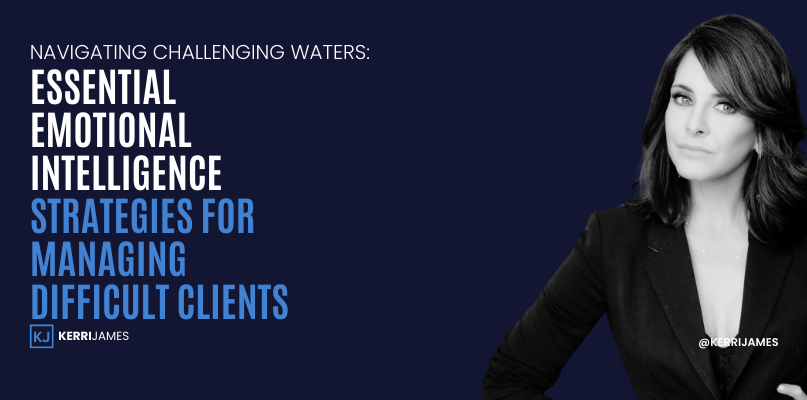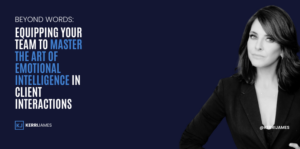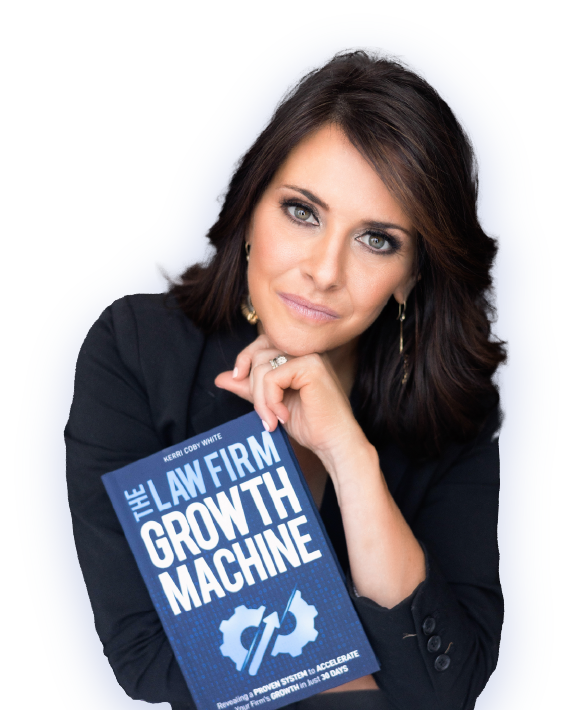Navigating Challenging Client Interactions: The Role of Emotional Intelligence in Legal Practice
In the dynamic world of legal practice, client interactions are rarely predictable. While many clients are a pleasure to work with, every lawyer inevitably encounters those who present unique challenges. I recall a particularly demanding client early in my career whose constant negativity and unrealistic expectations tested my patience and communication skills. This experience stood out as a pivotal moment, highlighting that success in law isn’t solely dependent on legal expertise but also on emotional intelligence (EQ)—the ability to understand and manage our own emotions while empathizing with others. The lessons I learned from that client encounter ignited my interest in the profound impact that emotional intelligence can have in managing client relationships, especially the most challenging ones.
Emotional intelligence is not merely about being “nice” or suppressing emotions; it involves recognizing and utilizing emotional awareness to navigate complex interpersonal dynamics. By enhancing emotional intelligence, lawyers can build stronger, more effective relationships, leading to better outcomes for both the lawyer and their clients. In this context, emotional intelligence goes beyond merely managing difficult clients; it helps to understand, connect, and guide them through their emotional turmoil, transforming a potentially adversarial relationship into a cooperative one.
Understanding the Roots of Difficult Client Behavior
Before diving into specific strategies for managing difficult clients, it is crucial to understand the underlying causes that drive challenging behaviors. Client frustrations often have deeper roots, and understanding these factors can provide insights into how to manage such interactions effectively.
1. Fear and Anxiety:
Legal matters are often emotionally charged and stressful, leading to significant anxiety for many clients. The uncertainty about outcomes, the complexity of legal processes, or the potential for life-altering consequences can make clients feel vulnerable. These feelings of fear can manifest as irritability, defensiveness, or even aggression. As a result, they may become demanding or overly critical, which can be overwhelming for any lawyer trying to maintain professionalism.
2. Lack of Control:
When clients face legal challenges, they may feel a loss of control over their situation. This lack of control can be frustrating, especially when clients don’t understand the legal processes or feel powerless in the face of decisions being made for them. As a result, they may exhibit behaviors aimed at regaining control—such as insisting on unrealistic demands or challenging the lawyer’s decisions.
3. Past Negative Experiences:
Some clients come to the table with preconceived notions about lawyers, often shaped by past negative experiences with legal professionals or their interactions with the justice system. These past encounters may have fostered distrust or skepticism, making it difficult for them to build trust with new lawyers. This deep-rooted negativity can make them more resistant to collaboration, leading to friction in the working relationship.
4. Personality Styles:
Every client brings their own personality to the table, and some personality traits can be more challenging than others. For instance, clients with dominant or aggressive personalities may assert themselves in ways that can feel overwhelming or even intimidating. Similarly, clients who are perfectionists may set unrealistic expectations or demand more than what is reasonable, leading to a strained relationship. Recognizing these personality traits and adjusting communication accordingly is essential in managing difficult clients effectively.
Essential Emotional Intelligence Strategies for Managing Difficult Clients
1. Self-Awareness: Understanding Your Own Emotional Landscape
The foundation of emotional intelligence is self-awareness—the ability to recognize and understand your own emotions in a given situation. When interacting with a challenging client, it is important to be aware of how their behavior affects you emotionally. Are you feeling frustrated, defensive, or impatient? Identifying these feelings helps you prevent them from escalating the situation. Self-awareness allows you to pause, take a breath, and respond with empathy and professionalism rather than react impulsively. It’s about ensuring that your emotional state doesn’t interfere with your ability to manage the situation calmly.
2. Empathy: Stepping into the Client’s Shoes
Empathy—the ability to understand and share the feelings of another—is a key component of emotional intelligence and one of the most powerful tools in managing difficult clients. Even if you don’t agree with the client’s behavior or viewpoint, attempting to see the situation from their perspective can help de-escalate tensions. This does not mean agreeing with their every demand or view but recognizing the emotions behind those behaviors. What fears, anxieties, or personal experiences might be fueling their actions? By acknowledging these emotions, you can foster a sense of connection and demonstrate that you are there to help and understand their concerns.
3. Active Listening: Hearing Beyond the Words
Active listening is one of the most powerful tools for building rapport with a client. It involves fully focusing on the client’s words, tone, body language, and emotional cues, rather than simply hearing their words. Active listening requires reflecting back what they say, paraphrasing their concerns, and asking clarifying questions to ensure a deep understanding of their perspective. For example, if a client expresses frustration over a delay in their case, a response like, “I hear that you’re feeling frustrated by the delay and are concerned about how it may affect the outcome. Let’s talk about what we can do to move forward,” shows that you are not just listening but are engaged in addressing their concerns. By doing so, you create a safe space where the client feels valued and understood.
4. Validation: Acknowledging the Client’s Emotions
Validation is the act of acknowledging the client’s emotions, even if you don’t agree with their point of view. Validating a client’s feelings demonstrates that you respect and understand their emotional experience, which can greatly help in de-escalating intense situations. For example, if a client is upset about the perceived lack of progress, validating their frustration by saying, “I understand how disappointing this situation must be for you. It’s frustrating when things don’t move as quickly as expected,” can help calm them down. Validation signals to the client that their feelings are not being ignored or dismissed, which can significantly improve their trust in you as their lawyer.
5. Setting Boundaries: Maintaining Professionalism and Respect
While emotional intelligence involves being empathetic and understanding, it’s also critical to set clear boundaries. This helps maintain professionalism and ensures that you respect both your client’s needs and your own emotional well-being. For instance, if a client becomes overly aggressive or makes unreasonable demands, it’s important to politely and firmly redirect the conversation. Setting boundaries might involve saying something like, “I understand that you are upset, but it is important that we work together respectfully to move forward in a constructive way.” Establishing boundaries prevents you from being overwhelmed and helps the client understand the professional limits of the relationship.
6. Clear Communication: Preventing Misunderstandings and Managing Expectations
Clear communication is crucial for managing client expectations. Lawyers often deal with complex issues that clients may not fully understand, leading to confusion and frustration. By simplifying legal jargon and explaining processes in clear, plain language, you reduce the likelihood of misunderstandings. Additionally, regular updates about the status of their case and transparent communication regarding timelines or costs helps clients feel more in control and less anxious. Setting clear expectations from the outset ensures that clients understand what to expect at each stage of the process.
7. Finding Common Ground: Building a Collaborative Relationship
Even with the most challenging clients, there is often some common ground on which to build a stronger relationship. In many cases, the client’s ultimate goal is a successful outcome, even if they are difficult to work with. Emphasizing shared goals can help redirect a client’s energy towards collaboration rather than confrontation. For example, you could say, “I know that you are deeply invested in this case and want the best outcome. Let’s focus on how we can work together to achieve that goal.” By framing the relationship as a partnership, clients are more likely to see you as an ally rather than an adversary.
8. Seeking Support: Knowing When to Ask for Help
Managing difficult clients can be emotionally draining, especially when their behavior begins to take a toll on your well-being. It’s important to recognize when you need help and seek support from colleagues, mentors, or professional counselors. Talking through challenging situations can provide valuable insights and prevent burnout. Sometimes, seeking a fresh perspective on a difficult client can help you find a new approach to managing the relationship.
Final Words: Building Resilience and Strengthening Client Relationships
In the legal profession, client relationships are often the cornerstone of long-term success. While it is easy to focus solely on the legal aspects of a case, it is equally important to cultivate emotional intelligence as a tool for navigating the complexities of client interactions. Difficult clients, while challenging, can also serve as opportunities for personal growth and professional development.
By applying the strategies of emotional intelligence—self-awareness, empathy, active listening, validation, clear communication, and boundary-setting—lawyers can not only manage difficult clients but can also turn adversarial situations into productive collaborations. Embracing EQ as a core skill set helps lawyers understand that every client, no matter how difficult, is a person with their own fears, frustrations, and needs.
Ultimately, by developing emotional intelligence and using it to connect with clients on a deeper level, lawyers can create lasting relationships built on trust, respect, and mutual understanding. This not only improves the client experience but also enhances the lawyer’s ability to navigate the challenges inherent in legal practice. As I learned from my early experiences with difficult clients, the journey to becoming a better lawyer is not just about mastering the law but about mastering the emotional intelligence that fosters stronger, more resilient client relationships.
Specific Strategies for Different Types of Difficult Clients
In legal practice, managing client relationships effectively is key to ensuring not only the success of the case but also the smooth functioning of the lawyer-client dynamic. While most clients are straightforward, lawyers inevitably encounter challenging personalities. These clients often exhibit emotions or behaviors that complicate communication and decision-making. Below are strategies for dealing with five common types of difficult clients: the Angry Client, the Anxious Client, the Demanding Client, the Skeptical Client, and the Indecisive Client.
1. The Angry Client: Staying Calm and Professional
Anger is a powerful emotion, and when clients are upset, it can be challenging to maintain composure. However, a lawyer’s first responsibility is to remain calm and professional, regardless of the client’s behavior.
Strategy: The key is not to react defensively. Acknowledge the client’s anger without mirroring it. Use phrases like, “I can see that you’re frustrated, and I understand why this situation has upset you.” Validation is critical. Clients need to feel heard, and acknowledging their emotions can help de-escalate the situation.
Once the client has calmed down, you can then address their underlying concerns. Often, anger is a symptom of unmet expectations or misunderstandings. Engage in active listening, ask clarifying questions, and work collaboratively to find a solution. This approach turns an emotionally charged interaction into a productive conversation aimed at resolving the issue.
2. The Anxious Client: Providing Reassurance and Managing Expectations
Anxiety is common in legal cases, as many clients face unknown outcomes and complex processes. An anxious client may express worry, doubt, or even panic about their case.
Strategy: Reassurance and clear communication are essential in these situations. Offer a calm, empathetic presence and explain the steps of the legal process in a simple, understandable way. Let the client know you are actively working on their behalf and provide realistic timelines.
It is also crucial to manage expectations. Many anxious clients fear the worst-case scenario. By addressing their anxieties directly—“I understand that you’re worried about the potential outcomes, but here’s what we can realistically expect based on the facts”—you can help ground them in the reality of the situation. Consistent updates and transparency will reduce their stress and increase trust.
3. The Demanding Client: Setting Boundaries and Managing Expectations
Demanding clients often have high expectations and may insist on immediate responses or unrealistic outcomes. While their desire for quick results can stem from their need for certainty or control, it can also lead to frustration if their demands aren’t met.
Strategy: Clear boundaries and a clear explanation of your process are critical in managing demanding clients. Politely but firmly explain your limits, especially when it comes to time, resources, or feasibility. For example, “I understand that you’d like this issue resolved quickly, but the process involves several steps, and I want to ensure that we approach this thoroughly.”
You can also offer alternative solutions when appropriate. If a client demands something that is outside the scope of what you can reasonably provide, help them understand why it’s not feasible and propose an alternative path forward. Offering choices can give clients a sense of control without compromising your professional limits.
4. The Skeptical Client: Building Trust and Transparency
Skeptical clients may not fully trust you or your advice. They often question your expertise or the effectiveness of the legal strategies you’re proposing. Building trust with this type of client requires patience and transparency.
Strategy: Start by demonstrating your competence and reliability. Provide evidence of your expertise, whether through past successes, client testimonials, or relevant case studies. Transparency is essential here—be open about the potential risks and uncertainties involved in their case. Avoid over-promising or offering guarantees, as this will only increase skepticism.
It’s important to engage with their doubts respectfully. If a client expresses concern, address it directly and calmly: “I understand that you have concerns about this approach, and it’s perfectly reasonable to ask questions. Here’s why I believe this is the best course of action…” This approach will build trust by showing that you respect their perspective while confidently explaining your reasoning.
5. The Indecisive Client: Guiding Them Toward a Decision
Indecisiveness can stall progress in a case, especially if a client cannot make up their mind about the best course of action. The indecisive client often feels overwhelmed by the choices available and may need help gaining clarity.
Strategy: Help the client clarify their priorities and goals. You can ask questions like, “What outcome are you hoping for?” or “What is most important to you in this situation?” By focusing on their objectives, you can narrow down the choices and provide a clearer direction.
Offer concise, easy-to-understand information about their options, and provide pros and cons for each. Avoid overwhelming them with too many details. Once the options are clearly defined, gently guide them toward making a decision without pressuring them. Reinforce that they are in control of the process, but offer your professional judgment to help them feel more confident in their decision.
Preventing Difficult Client Situations
While it’s inevitable that some clients will present challenges, there are proactive steps that can be taken to reduce the likelihood of conflicts and difficult relationships.
1. Client Screening: Identifying Potential Challenges Early On
Implementing a client screening process is one of the most effective ways to anticipate and prevent difficult client situations. During the initial consultation, evaluate whether the client’s needs and expectations align with your practice’s strengths. If a potential client has unrealistic expectations or displays behaviors that suggest they might be challenging, it’s better to address those concerns upfront.
Screening allows you to assess a client’s personality, communication style, and overall compatibility with your firm. It also gives you an opportunity to gauge whether you have the resources or expertise necessary to meet their needs.
2. Clear Communication from the Start: Setting Expectations Early
From the very beginning, set clear expectations regarding your services, fees, and communication protocols. Outline what the client can expect in terms of timelines, costs, and the legal process. This helps prevent misunderstandings and aligns both parties’ expectations.
For example, clarify your availability and response times: “I will provide updates at regular intervals, and if you have questions, you can reach me by email or phone during business hours.” Setting these expectations from the outset ensures that clients don’t feel neglected or disappointed later on.
3. Building Rapport Early: Establishing a Strong Foundation
Invest time in building rapport with your clients early on. Establishing a strong personal connection at the outset of the relationship can go a long way in ensuring that clients feel comfortable with you and trust your judgment. Take the time to understand their concerns, listen actively, and show that you are invested in their case.
When clients feel understood and valued, they are more likely to be patient and cooperative, even in difficult situations. Developing rapport helps establish a positive, collaborative tone for the entire relationship.
4. Regular Check-ins: Addressing Concerns Before They Escalate
Finally, make it a practice to regularly check in with clients throughout the legal process. Regular updates and communication help prevent misunderstandings and address concerns before they escalate into larger conflicts. A simple check-in can provide an opportunity for clients to voice concerns, ask questions, and receive reassurances. This proactive approach demonstrates your commitment to their case and strengthens the relationship, reducing the likelihood of difficult situations arising.
Final Thoughts
Managing difficult clients is an inevitable part of legal practice, but it doesn’t have to be a burden. By applying these strategies—whether it’s maintaining professionalism with an angry client, offering reassurance to an anxious client, or building trust with a skeptical one—lawyers can navigate challenging situations with ease. Proactive steps like client screening, clear communication, and building rapport early on can help prevent difficult situations from arising in the first place.
At the end of the day, maintaining strong client relationships requires a combination of legal expertise, emotional intelligence, and communication skills. By understanding and addressing the underlying needs and emotions of difficult clients, you can build stronger, more effective relationships that benefit both your clients and your practice.










